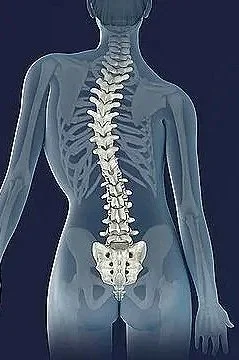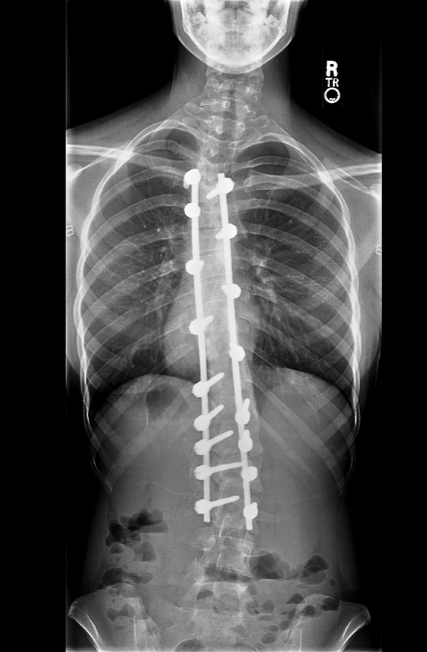By Brett Kelman, KFF Health News
Each month, Michelle Shaw went to a pain clinic to get the shots that made her back feel worse — so she could get the pills that made her back feel better.
Shaw, 56, who has been dependent on opioid painkillers since she injured her back in a fall a decade ago, said in both an interview with KFF Health News and in sworn courtroom testimony that the Tennessee clinic would write the prescriptions only if she first agreed to receive three or four "very painful" injections of another medicine along her spine.
The clinic claimed the injections were steroids that would relieve her pain, Shaw said, but with each shot her agony would grow. Shaw said she eventually tried to decline the shots, then the clinic issued an ultimatum: Take the injections or get her painkillers somewhere else.
"I had nowhere else to go at the time," Shaw testified, according to a federal court transcript. "I was stuck."
Shaw was among thousands of patients of Pain MD, a multistate pain management company that was once among the nation's most prolific users of what it referred to as "tendon origin injections," which normally inject a single dose of steroids to relieve stiff or painful joints.
As many doctors were scaling back their use of prescription painkillers due to the opioid crisis, Pain MD paired opioids with monthly injections into patients' backs, claiming the shots could ease pain and potentially lessen reliance on painkillers, according to federal court documents.
Now, years later, Pain MD's injections have been proved in court to be part of a decade-long fraud scheme that made millions by capitalizing on patients' dependence on opioids.
The Department of Justice has successfully argued at trial that Pain MD's "unnecessary and expensive injections" were largely ineffective because they targeted the wrong body part, contained short-lived numbing medications but no steroids, and appeared to be based on test shots given to cadavers — people who felt neither pain nor relief because they were dead.
Four Pain MD employees have pleaded guilty or been convicted of health care fraud, including company president Michael Kestner, who was found guilty of 13 felonies at an October trial in Nashville, Tennessee. According to a transcript from Kestner's trial that became public in December, witnesses testified that the company documented giving patients about 700,000 total injections over about eight years and said some patients got as many as 24 shots at once.
"The defendant, Michael Kestner, found out about an injection that could be billed a lot and paid well," said federal prosecutor James V. Hayes as the trial began, according to the transcript. "And they turned some patients into human pin cushions."
The Department of Justice declined to comment for this article. Kestner's attorneys either declined to comment or did not respond to requests for an interview. At trial, Kestner's attorneys argued that he was a well-intentioned businessman who wanted to run pain clinics that offered more than just pills. He is scheduled to be sentenced on April 21 in a federal court in Nashville.
According to the transcript of Kestner's trial, Shaw and three other former patients testified that Pain MD's injections did not ease their pain and sometimes made it worse. The patients said they tolerated the shots only so Pain MD wouldn't cut off their prescriptions, without which they might have spiraled into withdrawal.
"They told me that if I didn't take the shots — because I said they didn't help — I would not get my medication," testified Patricia McNeil, a former patient in Tennessee, according to the trial transcript. "I took the shots to get my medication."
In her interview with KFF Health News, Shaw said that often she would arrive at the Pain MD clinic walking with a cane but would leave in a wheelchair because the injections left her in too much pain to walk.
"That was the pain clinic that was supposed to be helping me," Shaw said in her interview. "I would come home crying. It just felt like they were using me."
‘Medically Unnecessary’ Injections
Pain MD, which sometimes operated under the name Mid-South Pain Management, ran as many as 20 clinics in Tennessee, Virginia and North Carolina throughout much of the 2010s. Some clinics averaged more than 12 injections per patient each month, and at least two patients each received more than 500 shots in total, according to federal court documents.
All those injections added up. According to Medicare data filed in federal court, Pain MD and Mid-South Pain Management billed Medicare for more than 290,000 "tendon origin injections" from January 2010 to May 2018, which is about seven times that of any other Medicare biller in the U.S. over the same period.
Tens of thousands of additional injections were billed to Medicaid and Tricare during those same years, according to federal court documents. Pain MD billed these government programs for about $111 per injection and collected more than $5 million from the government for the shots, according to the court documents.
More injections were billed to private insurance too. Christy Wallace, an audit manager for BlueCross BlueShield of Tennessee, testified that Pain MD billed the insurance company about $40 million for more than 380,000 injections from January 2010 to March 2013. BlueCross paid out about $7 million before it cut off Pain MD, Wallace said.
These kinds of enormous billing allegations are not uncommon in health care fraud cases, in which fraudsters sometimes find a legitimate treatment that insurance will pay for and then overuse it to the point of absurdity, said Don Cochran, a former U.S. attorney for the Middle District of Tennessee.
Tennessee alone has seen fraud allegations for unnecessary billing of urine testing, skin creams and other injections in just the past decade. Federal authorities have also investigated an alleged fraud scheme involving a Tennessee company and hundreds of thousands of catheters billed to Medicare, according to The Washington Post, citing anonymous sources.
Cochran said the Pain MD case felt especially "nefarious" because it used opioids to make patients play along.
"A scheme where you get Medicare or Medicaid money to provide a medically unnecessary treatment is always going to be out there," Cochran said. "The opioid piece just gives you a universe of compliant people who are not going to question what you are doing."
"It was only opioids that made those folks come back," he said.
The allegations against Pain MD became public in 2018 when Cochran and the Department of Justice filed a civil lawsuit against the company, Kestner, and several associated clinics, alleging that Pain MD defrauded taxpayers and government insurance programs by billing for "tendon origin injections" that were "not actually injections into tendons at all."
Kestner, Pain MD and several associated clinics have each denied all allegations in that lawsuit, which is ongoing.
Scott Kreiner, an expert on spine care and pain medicine who testified at Kestner's criminal trial, said that true tendon origin injections (or TOIs) typically are used to treat inflamed joints, like the condition known as "tennis elbow," by injecting steroids or platelet-rich plasma into a tendon. Kreiner said most patients need only one shot at a time, according to the transcript.
But Pain MD made repeated injections into patients' backs that contained only lidocaine or Marcaine, which are anesthetic medications that cause numbness for mere hours, Kreiner testified.
Pain MD also used needles that were often too short to reach back tendons, Kreiner said, and there was no imaging technology used to aim the needle anyway. Kreiner said he didn't find any injections in Pain MD's records that appeared medically necessary, and even if they had been, no one could need so many.
"I simply cannot fathom a scenario where the sheer quantity of TOIs that I observed in the patient records would ever be medically necessary," Kreiner said, according to the trial transcript. "This is not even a close call."
Jonathan White, a physician assistant who administered injections at Pain MD and trained other employees to do so, then later testified against Kestner as part of a plea deal, said at trial that he believed Pain MD's injection technique was based on a "cadaveric investigation."
According to the trial transcript, White said that while working at Pain MD he realized he could find no medical research that supported performing tendon origin injections on patients' backs instead of their joints.
When he asked if Pain MD had any such research, White said, an employee responded with a two-paragraph letter from a Tennessee anatomy professor — not a medical doctor — that said it was possible to reach the region of back tendons in a cadaver by injecting "within two fingerbreadths" of the spine. This process was "exactly the procedure" that was taught at Pain MD, White said.
During his own testimony, Kreiner said it was "potentially dangerous" to inject a patient as described in the letter, which should not have been used to justify medical care.
"This was done on a dead person," Kreiner said, according to the trial transcript. "So the letter says nothing about how effective the treatment is."
Patient Treated ‘Like a Dartboard’
Pain MD collapsed into bankruptcy in 2019, leaving some patients unable to get new prescriptions because their medical records were stuck in locked storage units, according to federal court records.
At the time, Pain MD defended the injections and its practice of discharging patients who declined the shots. When a former patient publicly accused the company of treating his back "like a dartboard," Pain MD filed a defamation lawsuit, then dropped the suit about a month later.
"These are interventional clinics, so that's what they offer," Jay Bowen, a then-attorney for Pain MD, told The Tennessean newspaper in 2019. "If you don't want to consider acupuncture, don't go to an acupuncture clinic. If you don't want to buy shoes, don't go to a shoe store."
Kestner's trial told another story. According to the trial transcript, eight former Pain MD medical providers testified that the driving force behind Pain MD's injections was Kestner himself, who is not a medical professional and yet regularly pressured employees to give more shots.
One nurse practitioner testified that she received emails "every single workday" pushing for more injections. Others said Kestner openly ranked employees by their injection rates, and implied that those who ranked low might be fired.
"He told me that if I had to feed my family based on my productivity, that they would starve," testified Amanda Fryer, a nurse practitioner who was not charged with any crime.
Brian Richey, a former Pain MD nurse practitioner who at times led the company's injection rankings, and has since taken a plea deal that required him to testify in court, said at the trial that he "performed so many injections" that his hand became chronically inflamed and required surgery.
"'Over injecting killed my hand,'" Richey said on the witness stand, reading a text message he sent to another Pain MD employee in 2017, according to the trial transcript. "'I was in so much pain Injecting people that didn’t want it but took it to stay a patient.'"
"Why would they want to stay there?" a prosecutor asked.
"To keep getting their narcotics," Richey responded, according to the trial transcript.
Throughout the trial, defense attorney Peter Strianse argued that Pain MD's focus on injections was a result of Kestner's "obsession" with ensuring that the company "would never be called a pill mill."
Strianse said that Kestner "stayed up at night worrying" about patients coming to clinics only to get opioid prescriptions, so he pushed his employees to administer injections, too.
"Employers motivating employees is not a crime," Strianse said at closing arguments, according to the court transcript. "We get pushed every day to perform. It's not fraud; it's a fact of life."
Prosecutors insisted that this defense rang hollow. During the trial, former employees had testified that most patients' opioid dosages remained steady or increased while at Pain MD, and that the clinics did not taper off the painkillers no matter how many injections were given.
"Giving them injections does not fix the pill mill problem," federal prosecutor Katherine Payerle said during closing arguments, according to the trial transcript. "The way to fix being a pill mill is to stop giving the drugs or taper the drugs."
KFF Health News is a national newsroom that produces in-depth journalism about health issues.








